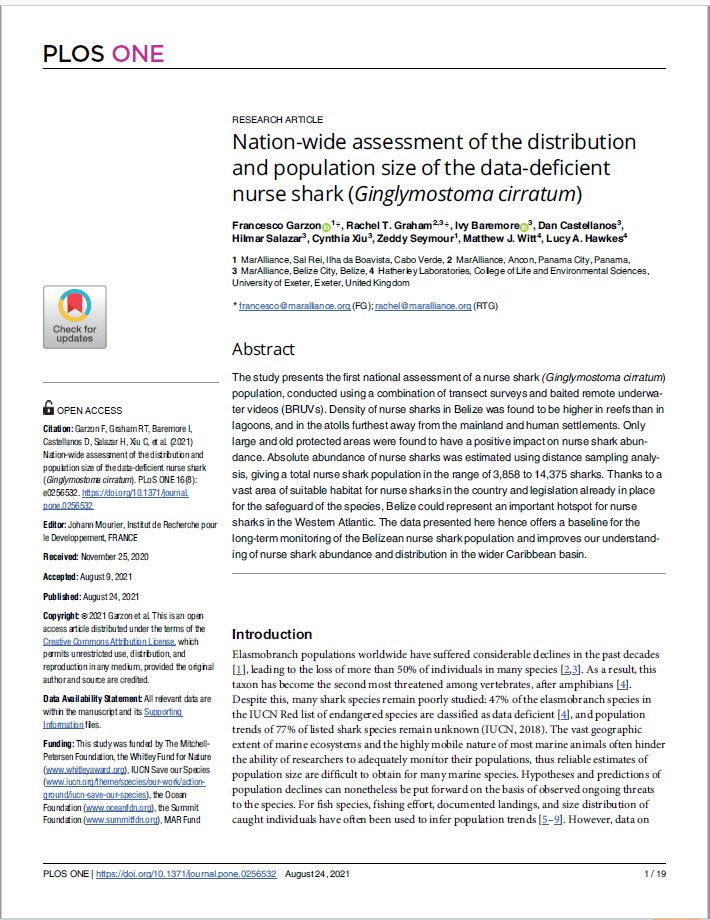The study presents the first national assessment of a nurse shark (Ginglymostoma cirratum) population, conducted using a combination of transect surveys and baited remote underwater videos (BRUVs). Density of nurse sharks in Belize was found to be higher in reefs than in lagoons, and in the atolls furthest away from the mainland and human settlements. Only large and old protected areas were found to have a positive impact on nurse shark abundance. Absolute abundance of nurse sharks was estimated using distance sampling analysis, giving a total nurse shark population in the range of 3,858 to 14,375 sharks. Thanks to a vast area of suitable habitat for nurse sharks in the country and legislation already in place for the safeguard of the species, Belize could represent an important hotspot for nurse sharks in the Western Atlantic. The data presented here hence offers a baseline for the long-term monitoring of the Belizean nurse shark population and improves our understanding of nurse shark abundance and distribution in the wider Caribbean basin.
Francesco GarzonID
1*, Rachel T. Graham2,3*, Ivy BaremoreID
3, Dan Castellanos3,
Hilmar Salazar3, Cynthia Xiu3, Zeddy Seymour1, Matthew J. Witt4, Lucy A. Hawkes4

